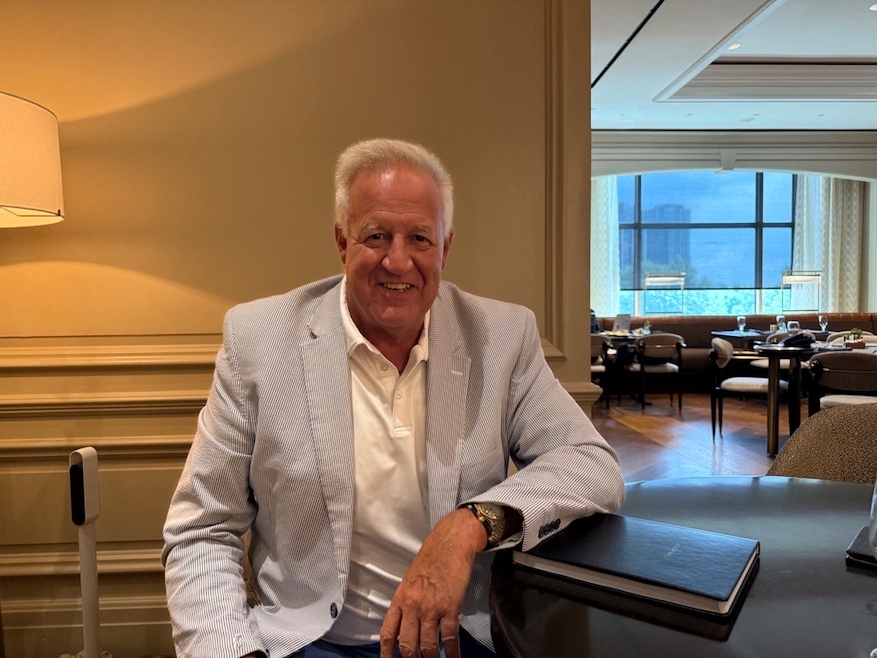Mortgage lender Steven Trautwein claims to be an expert on one thing: the island of Anguilla. He says he knows a thing or two about loans, too.
Last week, over coffee and fresh orange juice at the Ritz Carlton in Tysons Corner, Virginia, Trautwein alternated between rhapsodizing on his favorite Caribbean Island — and selling his theory that “2026 is the year of the adjustable-rate mortgage," known as ARMs.
That's because Trautwein expects the cost of short-term borrowing to become cheaper, making this flexible type of mortgage more attractive than a fixed-rate one.
“We’re going to see a point next year where we’re going to be able to do a seven-year or 10-year ARMs [1.5% to 2%] lower than a 30-year, fixed-rate mortgage,” the 35-year veteran of the financial services industry and senior loan officer at Intercoastal Mortgage told Homes.com.
Already, the share of ARMs seems to be inching upward, according to data from the Mortgage Bankers Association, which last week reported that the share of ARM applications increased to nearly 10% in the week ended August 8.
ARMs invite new risks for borrowers
Unlike fixed-rate mortgages that come with a set interest rate, ARMs are characterized by their variable interest rates. An ARM allows a borrower to lock in one rate for a set period — five or seven years, for example.
That rate is usually lower than you would get with a fixed-rate mortgage. But, after that period lapses, the rate will move according to the market benchmark the lender has chosen — typically Treasury bonds or another short-term rate — creating a degree of risk for borrowers.
For example, if interest rates could go higher in five years, existing ARMs could reset to higher borrowing costs, making a monthly mortgage payment much higher.
Trautwein is betting that short-term interest rates will come down in the next year as policymakers try to tame inflation. Long-term rates may stay higher for a while out of concern about fiscal policy and government deficits. Adjustable-rate mortgages, because they have relatively short time horizons, can look more attractive in the near term.
Here’s what Trautwein sees as the future for the ARM market — and what borrowers need to know about the risky loans.
The year of the ARM
This interview has been edited for clarity and length.
Tell me about your ‘year of the ARM’ prediction. What do you think will happen to rates?
When the pendulum goes too far one way, it goes too far the other way.
Have you started seeing increased demand for ARMs in your own business yet?
A little bit.
Across my career, less than 3% of my loans have been ARMs.
How do you talk about adjustable-rate mortgages with borrower clients?
Risk reward. The reward is more obvious than the risk, but we’ve got to drill down on the risk, right?
People get comfortable in the snapshot in time, and they think that’s the normal and it’s going to stay like that forever, instead of thinking long term.
You’ve got to be careful, though. Not to be cliché, but if it seems too good to be true, it usually is.
When might an ARM be a better option than a fixed-rate mortgage?
I don’t think anyone should go from a fixed-rate mortgage to an ARM to save 0.375 percentage points. It’s not worth the risk if you’re staying in the house because the biggest risk out there, by far and five times anything else, is just the glaring fiscal irresponsibility of the [government] debt and deficit.
If I’m going to recommend as a mortgage strategist a client going to do an ARM product, it’s usually for the client who’s not going to be in the house for 25 years. If I think a client can own for more than 10 years, and I can save three eights of a point by going to an ARM, I’m not interested.
If someone appears to be here for five years and can save a half point, it’s different.
Let's say the ARM-aggedon you're forecasting actually happens. What happens in five, seven, 10 years when the fixed-rate portion of those loans expires?
Most of the clients that I have, they are probably not going to be in the same house then. Seven years tends to be around that average length of ownership.
I bought my last house eight years ago, and I swore they were going to take me out of there in a box, my ashes. But eight years later, it’s a new life stage. So, who’s really staying in a house that long?
But the other question is, what are the odds a client is going to be able to refinance from an ARM to a 30-year, fixed-rate mortgage in the five-percent range over that seven-year period? I think the odds are rather high, but the client has to understand if the United States keeps tacking on two and a half trillion a year in debt, that’s a risk.

